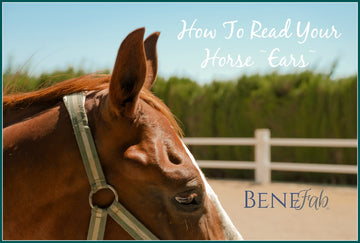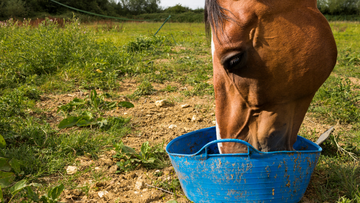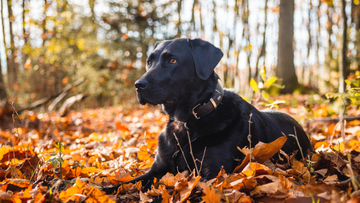
The difference between a horseman and an exceptional horseman is their ability to communicate with their horse. Communicating with your horse is necessary for any successful relationship. Communication only comes from truly understanding your horse and being able to read them. To read your horse, you must understand basic horse behavior.
We've all heard the saying “fight or flight”. Your horse is a flight animal meaning his number one instinct is to run away from something he fears. When your horse moves away from you when they are scared, they are respecting your space rather than jumping on top of you.
Secondly, horses are herd animals. They have a strong instinct to stay with a group of horses. They tend to stay in that group or go towards them during a pattern or an instance when they are alone.
Many people fault horses for these instincts. It is unfortunately a reaction for us as humans when we get frustrated. However, rather than getting frustrated we should work to read our horses and control these instincts.
The best way to understand your horse is to know how your horse talks to you. Your horse talks to through his
ears, eyes, mouth, tail and skin. By understanding how your horse talks to you, you will be able to read their every move.
We will be writing a series of blogs on each body part of the horse that will “talk” to you. For our first blog, we will be discussing the ears.
Ears
The speed of your horse’s ears will tell you a lot of things.
- If they are moving fast, this usually indicates some form of nervousness, worry, alarm, or panic.
- If they are moving slowly, this generally means that your horse is more relaxed and at ease with his environment.
The position of your horse’s ears is very important as well.
- When your horse’s ears move forward quickly, your horse is alarmed. Something has happened and it surprised him or he is very aware of something going on.
- If your horse’s ears went forward slowly, he is confident and happy and could be interested in what’s going on.
- If his ears are moving back and forth, your horse is attentive. He is paying attention to a few different things – what’s going on and what the handler/rider is asking of him.
- When the ears are upright and stay there, this represents no expression. Your horse could be relaxed and confident but he could also be bored.
- If your horse pins his ears back and holds them there, he is angry or resisting. This should be very concerning for the rider.
Next week, we will be discussing the eyes and what each eye action means. For more information on reading your horse, visit:
http://americashorsedaily.com/how-to-read-your-horse-part-1/#.VHj2jmRDtgo
 The difference between a horseman and an exceptional horseman is their ability to communicate with their horse. Communicating with your horse is necessary for any successful relationship. Communication only comes from truly understanding your horse and being able to read them. To read your horse, you must understand basic horse behavior.
We've all heard the saying “fight or flight”. Your horse is a flight animal meaning his number one instinct is to run away from something he fears. When your horse moves away from you when they are scared, they are respecting your space rather than jumping on top of you.
Secondly, horses are herd animals. They have a strong instinct to stay with a group of horses. They tend to stay in that group or go towards them during a pattern or an instance when they are alone.
Many people fault horses for these instincts. It is unfortunately a reaction for us as humans when we get frustrated. However, rather than getting frustrated we should work to read our horses and control these instincts.
The best way to understand your horse is to know how your horse talks to you. Your horse talks to through his ears, eyes, mouth, tail and skin. By understanding how your horse talks to you, you will be able to read their every move.
We will be writing a series of blogs on each body part of the horse that will “talk” to you. For our first blog, we will be discussing the ears.
Ears
The speed of your horse’s ears will tell you a lot of things.
The difference between a horseman and an exceptional horseman is their ability to communicate with their horse. Communicating with your horse is necessary for any successful relationship. Communication only comes from truly understanding your horse and being able to read them. To read your horse, you must understand basic horse behavior.
We've all heard the saying “fight or flight”. Your horse is a flight animal meaning his number one instinct is to run away from something he fears. When your horse moves away from you when they are scared, they are respecting your space rather than jumping on top of you.
Secondly, horses are herd animals. They have a strong instinct to stay with a group of horses. They tend to stay in that group or go towards them during a pattern or an instance when they are alone.
Many people fault horses for these instincts. It is unfortunately a reaction for us as humans when we get frustrated. However, rather than getting frustrated we should work to read our horses and control these instincts.
The best way to understand your horse is to know how your horse talks to you. Your horse talks to through his ears, eyes, mouth, tail and skin. By understanding how your horse talks to you, you will be able to read their every move.
We will be writing a series of blogs on each body part of the horse that will “talk” to you. For our first blog, we will be discussing the ears.
Ears
The speed of your horse’s ears will tell you a lot of things.






















